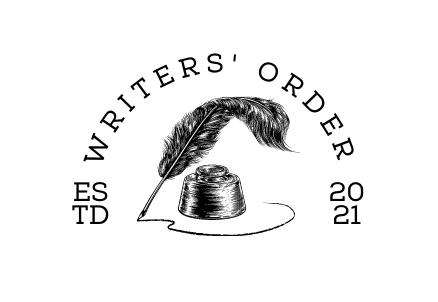You have to be the change to bring the change.

10 Writing Tips for Medical Writers
Our content is reader-supported. We may earn a commission if you make a purchase through one of our links.
The competitive landscape for post-residency positions has become more intense. As a result, increased research, publishing the findings as symposium abstracts, case studies, original studies, or scientific papers has increased.
Many are unaware that education for medical writers and medical writing itself is a leading contributory that is not addressed in universities and post-secondary education. Unfortunately, the English writing style employed for educational essays is not the same as the writing pattern required for this type of technical writing.
Medical and healthcare content writing is a lucrative field for freelancers as well. Publishers in this sector seek qualifications, expertise, and competence like others in the writing field.
Alongside getting published, medical writers will be also be employed in the future for ethical filings and research funding. Here are 5 career options you could pursue as a medical writer. If you desire to pursue a career as a medical writer, heed the writing tips for medical writers in this article to the point.
What is the Significance of Medical Writing?
It is undoubtedly disheartening if the outcomes of your well-conducted research were not adequately disseminated to the respective scientific community. The acceptance or rejection depends on the quality of language used in your article. Publishers would prefer a piece that delivers the message efficiently and to a wider audience without technical medical know-how. The ten writing tips for medical writers help you do just that.
Medical Writing Fundamentals
Medical writing is different from other writing styles in a myriad of ways. The information must be simple to comprehend, mainly when heavy medical terminology is employed.
Provide precise and simple definitions while assuming that not all readers will understand what a peritonsillar abscess means. So it would help if you are detailed and specific about whatever you write.
Since it is niche-specific, medical writing should always be tailored depending on the target audience and content. The vocabulary used to deliver the facts will be decided by the intended audience. For example:
- When writing for parental magazines, your target audience would be non-medical mothers.
- For educational publishings, your target readership would be teachers and lecturers.
- Your intended audience would comprise doctors, nurses, physiotherapists, pharmacists, and others if you were to write for medical professionals or a trade publication.
Another essential to remember is that a medical writer should always conduct proper research before stating any facts. Well-researched and fact-based writing add to the reliability and quality of the article. Always provide the reference content as a separate section in the paper or as a footnote if a study is cited as the basis for any stats.
10 Writing Tips for Medical Writers
Many writers make some minor writing errors which can quickly drop the quality of their content. Here are ten writing tips for medical writers.
- Read Up and Study
- Make a Plan for what you are going you Write
- Be Succinct and Precise
- Be Patient
- Learn to Cite Properly
- Proofread your Work
- Employ Proper Terminology
- Use Ambiguous Linguistic Features
- Provide a Caution
- Be Cautious when stating Facts
Read Up and Study
Reading papers and observing how other published authors write is a recommended approach to becoming a skilled medical writer. Start by analyzing existing publications on your subject, ideally from the same publication as the one you want to publish in.
This allows seeing how others have organized and expressed the arguments you will be writing. For example, when writing a/an:
- Original article: read and go through articles on the same subject and the original articles in the magazine for which you are writing. You might be able to find a pattern that you can employ in your report as well.
- Review article: read and go through similar or comparable articles. Analyze how they split up the headings and subheadings in the review.
- Case study: Like said above, read up other case studies in the journal you want to publish. This will help in learning their strategy for writing a case study.
Make a Plan for what you are going you Write
Starting with an empty page and writing a 2,000 or 3,000-word document can be intimidating. Plan the layout of each paragraph before you start. This is useful regardless of how lengthy or short your content is. Make sections like
- Introduction
- Methods
- Findings
- Discussions
- conclusions
Afterward, you can also construct subheadings in these respective headings. For example, the methods heading section could consist of the following subheadings:
- Research approach and volunteers
- Ethics, Clinical Evaluation
- Statistical Data analysis
By following the advice mentioned above, you can accomplish a clear understanding and a logical flow of the article, making things easier to comprehend.
Be Succinct and Precise
Many writers use extensive, verbose language in their manuscripts. Eschew using “and,” “that,” “which,” “although,” “,” “-,” and other words or characters that concatenate numerous sentences into a single sentence. Making your point in two brief sentences rather than one lengthy, disjointed statement has gained you nothing.
Try to keep the word count necessary to communicate a particular idea to a minimum. For this, a thesaurus comes in extremely handy. Thesaurus can also assist you in preventing the redundancy of using the same terms over and over again in your writing.
Be Patient
Writing two phrases could cost you thirty minutes, and writing a paragraph could take two hours. It takes patience to write and re-write until you discover the best approach to explain what you are trying to say. This surplus time invested will, however, lead to higher profitability.
Certain parts of a dissertation are, in fact, more impossible to execute than others. The Preface and Debate parts, for example, often necessitate more thought, analysis, and imagination than the Methodology and Findings sections.
Use your most concentrated periods to write the most difficult sections. For example, if you are very productive first thing in the morning, you can focus on these parts then.
Learn to Cite Properly
This part is frequently underdeveloped. Make a serious effort to verify that your reference is precise and uniform throughout. Referencing applications can be helpful in this regard. The majority of journals usually prefer the Vancouver referencing style.
Similarly, follow the journal’s additional format guidelines, including font size, double spacing, pages, and acronyms. All of these apparently insignificant and often tiresome details help to win over the examiner before they even begin reading your article.
Proofread your Work
Nothing could be more aggravating than reading a paper that contains typographical, syntactic, or referencing problems. It implies that the writers do not take the time to proofread their work. It is worth noting that your employers and article reviewers are both on a tight schedule.
Instead of addressing your errors, their time should be invested in evaluating your work. Before sending your content out for peer assessment, read and re-read it.
This allows you to avoid mistakes and helps you find phrases or portions that need to be rewritten. You should have reviewed and corrected a manuscript numerous times before submitting the document.
Employ Proper Terminology
When discussing a disease or drug in your article, use a recognized medical term instead of a lay phrase to describe it. Later on, utilize basic terminology or alternate titles to assist your audience in better comprehending the data.
Even if you are producing research journals for SEO, this is a good rule to follow. A notable source of ailment nomenclature is the WHO’s International Statistical Classification of Diseases and Related Health Problems.
Use Ambiguous Linguistic Features
If you are not confident about a medical fact, even after checking from authentic websites, you can employ ambiguous linguistic phrases. For example, if four sources give varying periods (for example, three months, four months, and seven months) for a dental implant to fuse with the jaw bone, use ambiguous adverbs or nouns to explain it. You can therefore write the point as, “In many cases, titanium implants require approximately four to seven months to osseointegrate with the jawbone.”
Provide a Caution
Since medical information placed on a site can occasionally result in legal proceedings, it is often a good idea to provide a clear disclaimer informing readers that you are not a medical professional.
This caution is per the statutory disclaimer that medical practitioners often put on their websites. “The author of this essay is not a healthcare practitioner,” for instance. Another example would be:
“The information in this writing was gathered from sources that were thought to be trustworthy, and every effort was made to assure its preciseness. This information is offered solely for educational reasons and must not be considered a replacement for professional health assistance”.
Be Cautious when Stating Facts
Physicians and medical practitioners are well aware that health information is continually evolving due to technological breakthroughs. When writing health-related pieces, lay authors must grasp this and avoid declaring anything as an unchangeable medical truth.
Many readers mistakenly believe that clinical personnel authored the medical publications and are unaware that specifics can differ depending on the instance. This may lead consumers to slavishly believe clearly articulated professional internet advice without seeing a physician about their situation.



